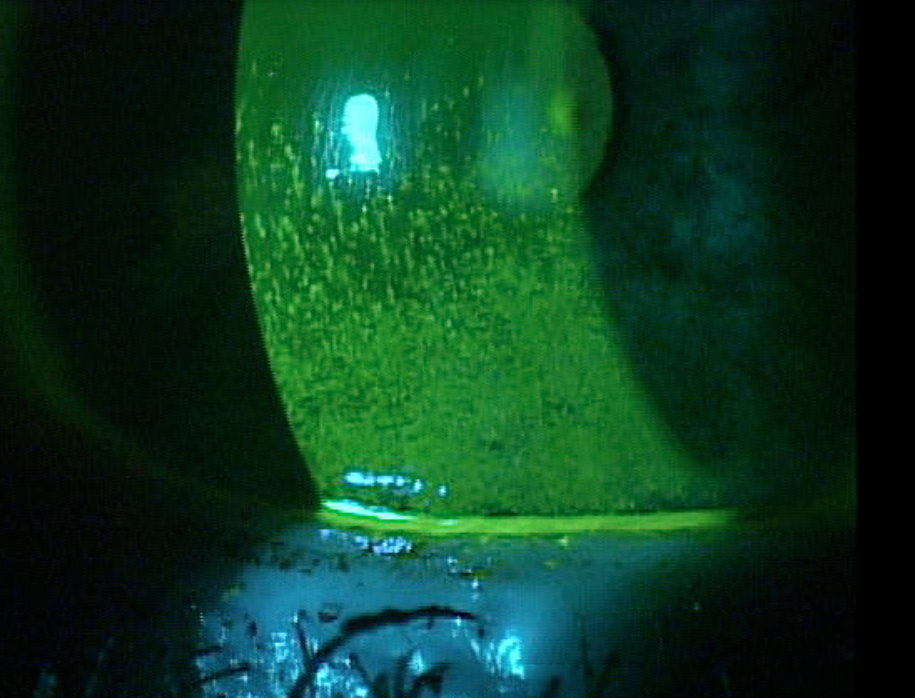 |
| Fluorescein and nasal lissamine green staining each demonstrate distinctive patterns in Sjögren’s patients that can be of value clinically. Photo: Paul Karpecki, OD. Click image to enlarge. |
Sjögren’s syndrome (SS) is an autoimmune disorder that can result in dry eye disease DED), as previous studies have shown. To discover the clinical features of SS-related dry eye, in this latest study, researchers recently evaluated anterior segment images and found that staining scores for corneal fluorescein and lissamine green (LG) use may be useful in the early detection.
A total of 502 cases were categorized into different groups: (1) Sjögren’s, (2) ocular graft-vs.-host disease, (3) other conditions, (4) simple DED and (5) no dry eye.
The inferior fluorescein staining score was significantly higher in the Sjögren’s group, as was that of nasal staining on lissamine green. “The sensitivity and specificity were 80.6% and 91.1%, respectively, with an area under the curve of 0.926,” the authors explained in the study, published in Cornea.
“Moreover, the inferior cornea and nasal conjunctiva were more damaged than the superior/central cornea,” the authors explained in the study.” Consequently, they calculated the sensitivity, specificity and predictive ability of the findings to test their validity as clinical parameters to screen for SS.
Previous studies reported that conjunctival lissamine staining was high in primary Sjögren’s cases, and others showed temporal and nasal conjunctival staining patterns in such patients. It’s also been shown that ocular staining scores were associated strongly with other features of Sjögren’s syndrome. “Thus, our results are supported by previous reports which showed that clinical conjunctival LG staining is related to the pathology of Sjögren’s syndrome,” the authors wrote.
Based on these results, the researchers suggest that nasal lissamine staining is perhaps the most salient factor. Several studies have reported corneal staining in DED patients, particularly inferiorly, which has recently been shown to be the key corneal zone required to predict various subtypes of dry eye.
These findings show that a positive inferior fluorescein staining and a positive nasal lissamine green staining are important signs for an immune-related dry eye, especially that arising from Sjögren’s syndrome, and may be useful in the early detection.
Shimizu E, Sato S, Asai K, et al. Clinical features of Sjögren Syndrome-related dry eye disease in anterior segment photographs. Cornea. May 26, 2023. [Epub ahead of print.] |

